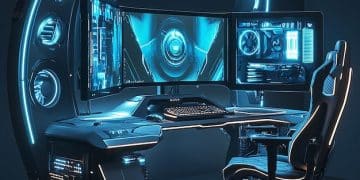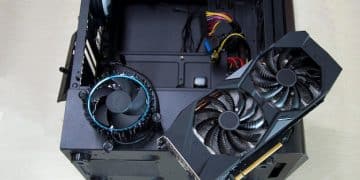Maximize Resale Value: PC Gaming Hardware Maintenance Tips for 2025
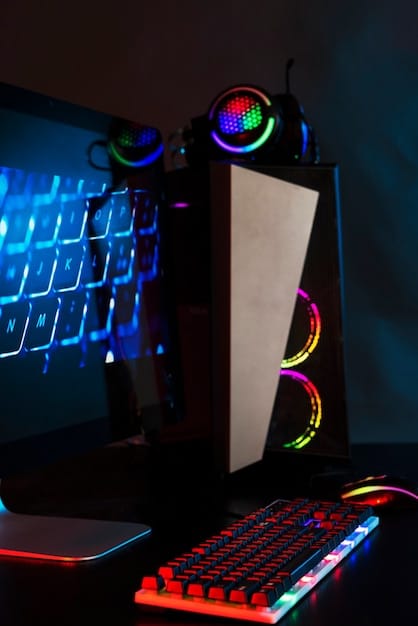
Maximize your PC gaming hardware’s resale value in 2025 by implementing proactive maintenance, careful cleaning, strategic upgrades, and meticulous record-keeping, ensuring it remains appealing to potential buyers.
Looking to upgrade your gaming rig in 2025 without taking a huge financial hit? The secret lies in proactive maintenance. This article explores essential strategies to maximize your resale value by keeping your PC gaming hardware in top condition.
Maintaining Your PC Gaming Hardware for Peak Resale Value
Maintaining your PC gaming hardware isn’t just about keeping it running; it’s an investment in its future value. A well-maintained system commands a higher price when you decide to sell or upgrade.
Regular Cleaning Inside and Out
Dust is the enemy of PC components. It insulates parts, leading to overheating and reduced performance. Make it a habit to clean your PC regularly.
- Use compressed air to remove dust from fans, heatsinks, and other components.
- Clean the exterior of your case with a microfiber cloth and a mild cleaning solution.
- Consider using a vacuum cleaner with a brush attachment for hard-to-reach areas, but be careful to avoid static discharge.
Effective cleaning can significantly extend the lifespan of your components and make them more appealing to potential buyers.
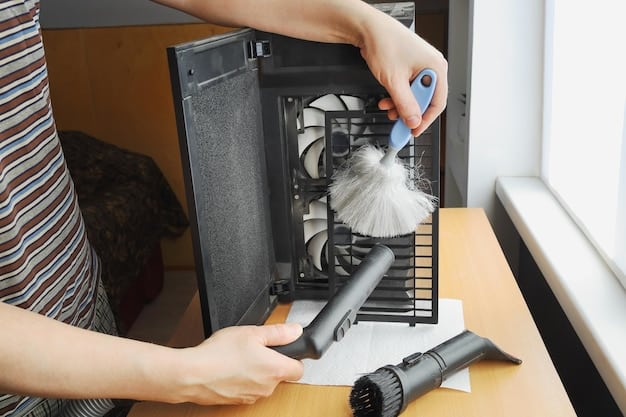
Proper Cable Management
Neat cable management improves airflow and makes your PC look more professional. It’s a small detail that can make a big difference in the eyes of a buyer.
- Use zip ties or Velcro straps to bundle cables together.
- Route cables behind the motherboard tray to keep them out of sight.
- Invest in a modular power supply to avoid having unnecessary cables cluttering your case.
Better airflow contributes to cooler temperatures and more stable performance, both of which increase the value of your hardware.
In conclusion, regular cleaning and good cable management aren’t just for aesthetics; they’re essential for maintaining the long-term health and value of your PC gaming hardware.
Optimizing Performance Through Software Updates
Keeping your software up-to-date is just as important as maintaining the physical components. Software updates often include performance improvements and security patches.
Update Your Drivers Regularly
Outdated drivers can lead to compatibility issues and reduced performance. Make sure your graphics card, motherboard, and other components have the latest drivers installed.
Manufacturers like Nvidia and AMD release new drivers frequently, so check their websites regularly or use their software utilities to stay up-to-date.
Keep Your Operating System Current
Newer versions of Windows and other operating systems often include performance optimizations and better support for the latest hardware.
- Enable automatic updates to ensure you always have the latest features and security patches.
- Consider upgrading to a newer version of Windows if your current version is no longer supported.
- Regular OS updates maintain compatibility with modern games and applications.
By keeping your software and drivers updated, you’ll ensure your PC is running at its best, increasing its appeal to potential buyers.
Software updates and operating system maintenance contribute to overall system stability and performance, demonstrating to buyers that your hardware has been well cared for.
Monitoring Temperatures and Preventing Overheating
Overheating can damage components and shorten their lifespan. Monitoring temperatures is crucial for preventing long-term damage.
Use Monitoring Software
Software like HWMonitor and MSI Afterburner can track the temperatures of your CPU, GPU, and other components, helping you identify potential issues before they cause damage.
Improve Cooling Solutions
If you notice that your components are running hot, consider upgrading your cooling solutions.
- Install additional case fans to improve airflow.
- Upgrade to a better CPU cooler, such as a liquid cooler.
- Reapply thermal paste to the CPU and GPU to ensure good contact with the heatsink.
Maintaining optimal temperatures can prolong the life of your components and prevent performance throttling, preserving their resale value.
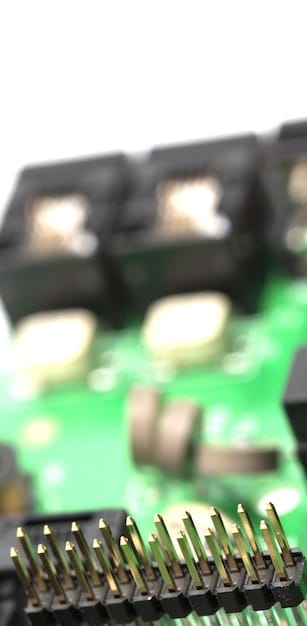
Clean Heatsinks and Fans Regularly
Dust buildup on heatsinks and fans reduces their effectiveness. Regular cleaning ensures they can dissipate heat efficiently.
Overheating is a major concern for PC gamers, so demonstrating that your system has been kept cool and stable is a big selling point.
Monitoring and managing temperatures is key to maintaining the longevity and performance of your gaming PC, assuring potential buyers of its reliability.
Upgrading Strategically for Maximum Impact
Strategic upgrades can significantly enhance the performance of your PC without breaking the bank. However, it’s important to choose upgrades that will have the most impact on resale value.
Prioritize the GPU
The graphics card is the most important component for gaming performance. Upgrading to a newer, more powerful GPU can make a big difference. Consider the current market and aim for a card that offers a good balance of price and performance.
Consider an SSD Upgrade
If you’re still using a traditional hard drive, upgrading to a solid-state drive (SSD) can drastically improve boot times and loading speeds.
SSDs are relatively inexpensive and can make a significant difference in the overall responsiveness of your system.
RAM Enhancements
Ensure you have enough RAM for modern games (16GB is generally recommended, and 32GB is becoming more common). Upgrading your RAM can improve multitasking and prevent performance bottlenecks.
Upgrading, when done strategically, can make a significant difference in performance, adding value to your hardware.
Choosing the right upgrades at the right time can significantly boost the appeal and value of your PC gaming hardware when it’s time to sell.
Maintaining Records and Documentation
Keeping detailed records of your hardware and maintenance activities can significantly increase its resale value. Buyers appreciate transparency and documentation.
Keep Original Packaging
Retaining the original boxes, manuals, and accessories for your components can make them more appealing to buyers. It shows that you’ve taken good care of your hardware.
Document Repairs and Upgrades
Keep records of any repairs or upgrades you’ve performed, including receipts and warranty information. This demonstrates that your hardware has been properly maintained.
Track Maintenance Activities
Create a log of your cleaning and maintenance activities, including dates and details of what you did. This provides evidence that you’ve taken proactive steps to keep your hardware in good condition.
Thorough documentation adds credibility and assures potential buyers of the care your hardware has received.
- Use a spreadsheet to track maintenance dates and actions taken.
- Scan and save receipts for all purchases and repairs.
- Photograph your PC’s condition regularly to document its upkeep.
Detailed records and documentation can provide assurance to potential buyers, increasing their confidence in your hardware and its value.
Creating a Compelling Listing and Negotiating a Fair Price
When it comes time to sell your PC gaming hardware, creating a compelling listing is essential for attracting potential buyers and maximizing your return. Presentation is key to achieving a fair price.
Take High-Quality Photos
Use good lighting and a clean background to showcase your hardware in the best possible light. Highlight any unique features or upgrades.
Write a Detailed Description
Provide a thorough description of your hardware, including its specifications, condition, and any relevant history. Be honest about any flaws or limitations.
Highlight Maintenance Efforts
Emphasize the steps you’ve taken to maintain your hardware, such as regular cleaning, software updates, and temperature monitoring. Back up your claims with documentation.
Good photos and descriptions highlight the value that you have maintained in your gaming PC.
Set a Fair Price
Research the market to determine a fair price for your hardware. Consider its age, condition, and performance compared to similar models. Be willing to negotiate, but don’t undervalue your hardware.
By creating a compelling listing and setting a fair price, you’ll increase your chances of selling your PC gaming hardware quickly and for a good price.
Ultimately, the presentation and negotiation stages are crucial for converting your maintenance efforts into tangible financial gains, securing the best possible resale value for your PC gaming hardware.
| Key Point | Brief Description |
|---|---|
| 💨 Regular Cleaning | Dust removal extends lifespan and improves performance. |
| 🔥 Temperature Monitoring | Prevent overheating to avoid damage and maintain value. |
| ⬆️ Software Updates | Keep drivers and OS current for peak performance. |
| 📦 Documentation | Keep records to prove maintenance and boost buyer confidence. |
Frequently Asked Questions
▼
It’s recommended to clean your PC every 3-6 months, depending on your environment. If you live in a dusty area or have pets, you might need to clean it more frequently.
▼
You’ll need compressed air, a microfiber cloth, and possibly a small brush or vacuum cleaner with a brush attachment. Avoid using liquids directly on components.
▼
Use monitoring software like HWMonitor or MSI Afterburner to track CPU, GPU, and other component temperatures. Keep an eye on these values during heavy use.
▼
Upgrading the GPU and adding an SSD typically provide the most noticeable performance improvements for gamers, making them desirable upgrades for resale.
▼
Documentation shows potential buyers that you’ve taken good care of your PC. It builds trust and justifies a higher asking price by providing evidence of maintenance.
Conclusion
By following these pro tips, you can significantly maximize your resale value of your PC gaming hardware in 2025. Regular maintenance, strategic upgrades, and meticulous record-keeping will ensure that your system remains a valuable asset when it’s time to sell or upgrade.




